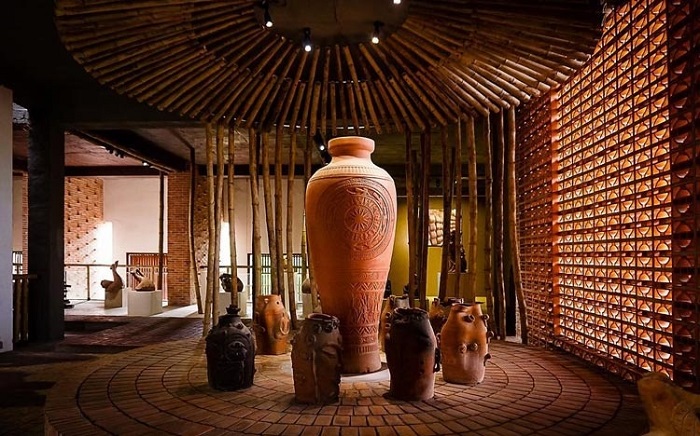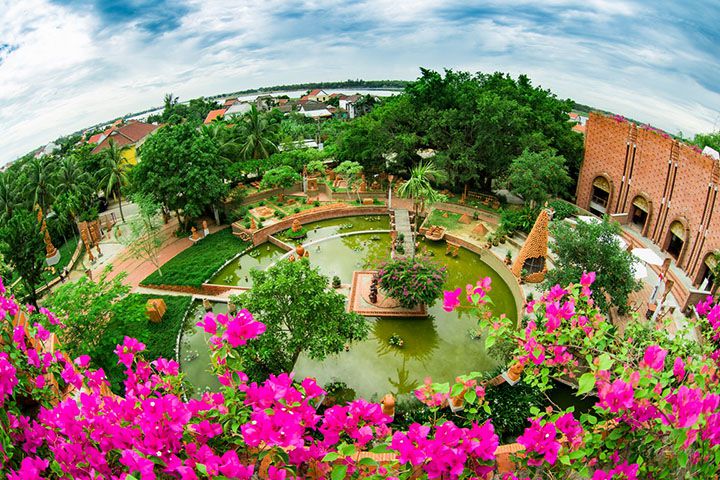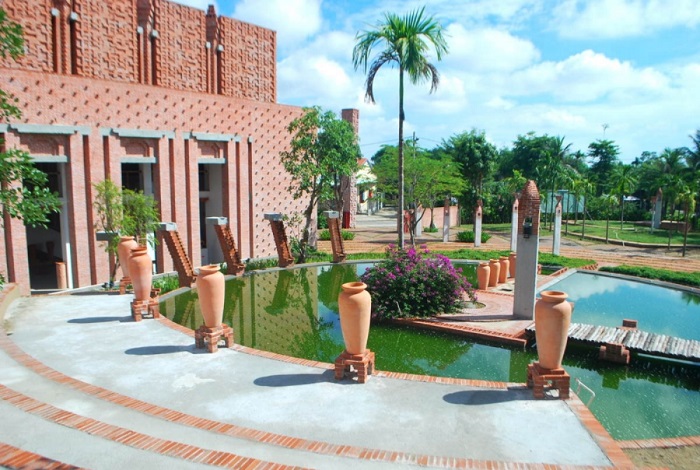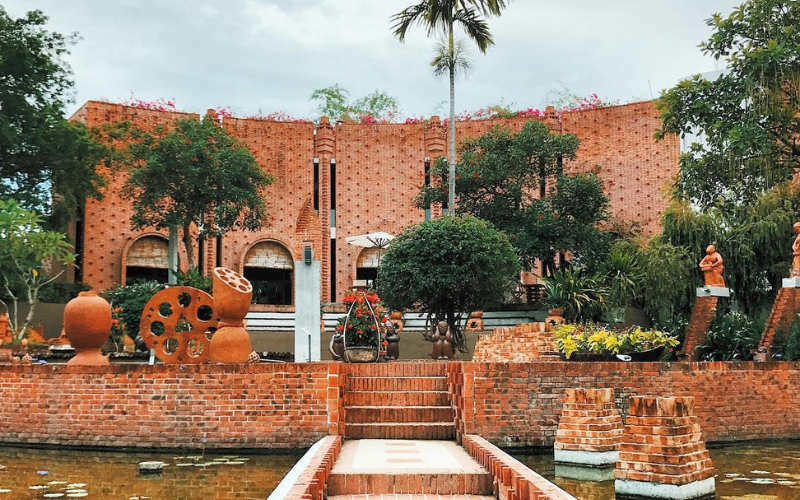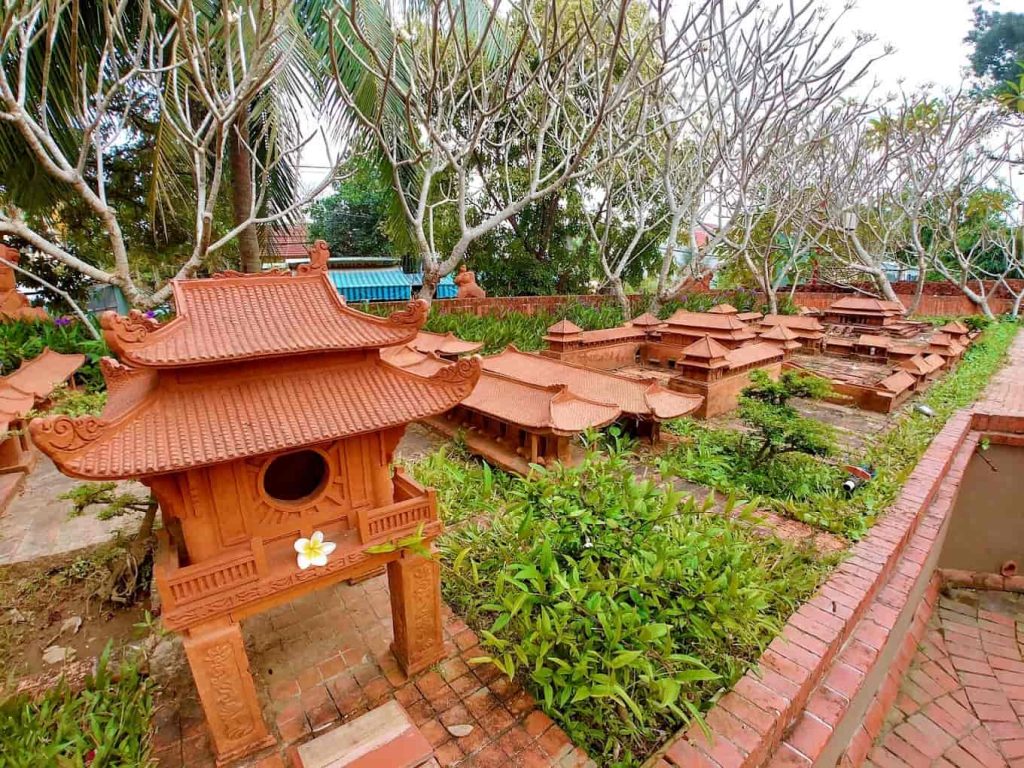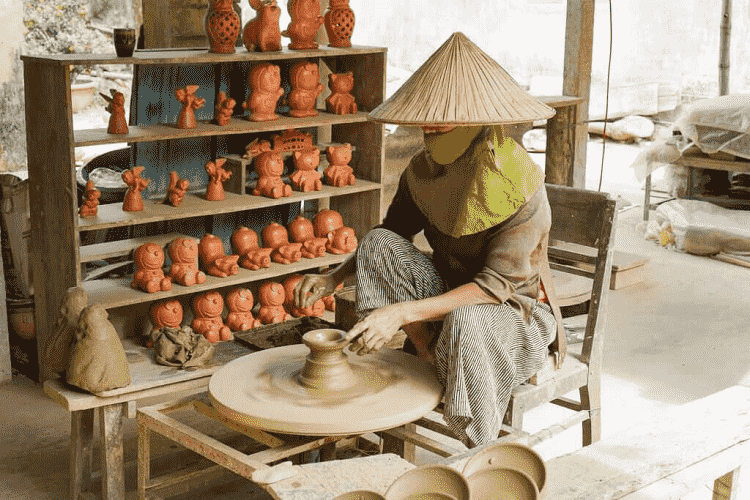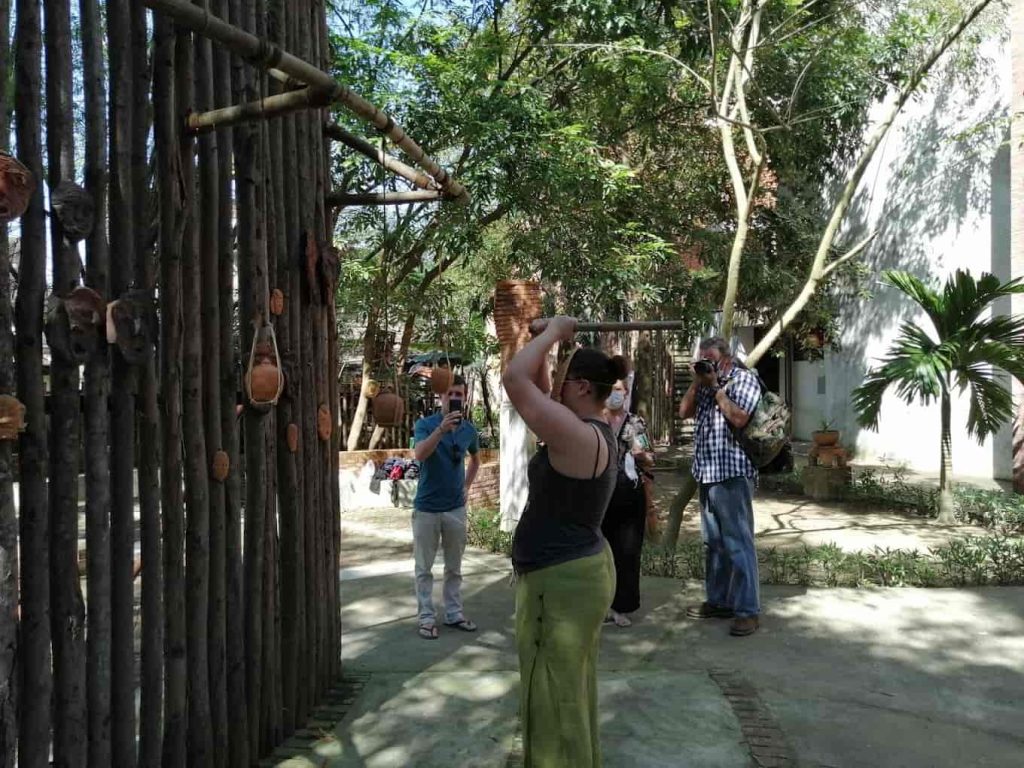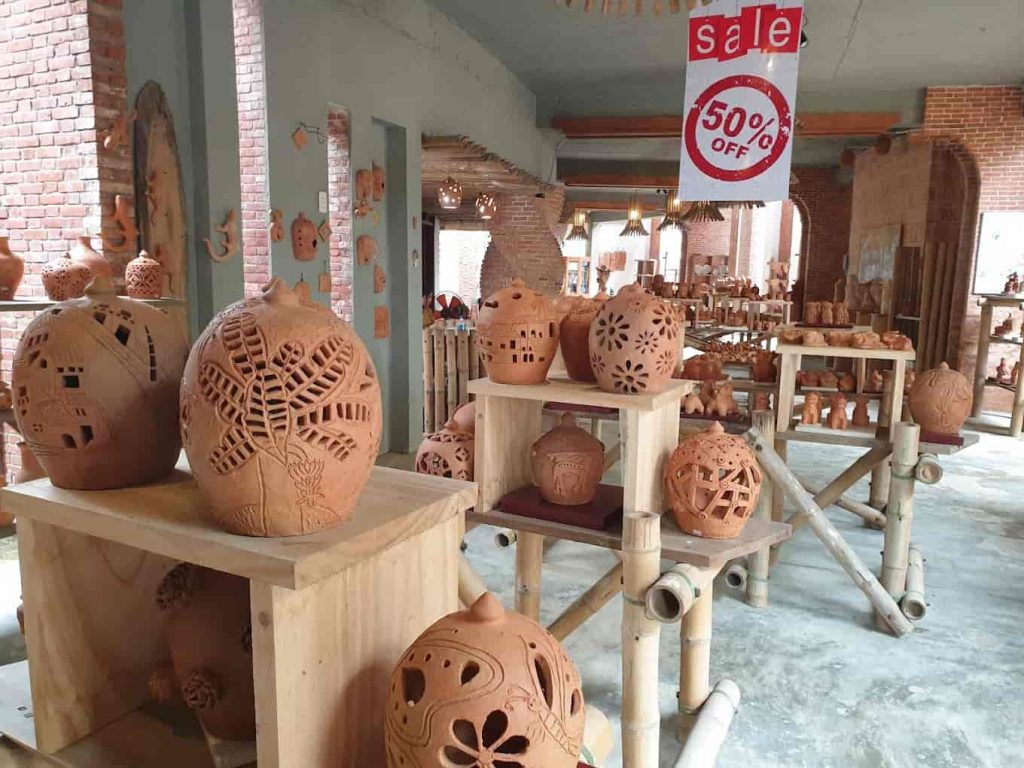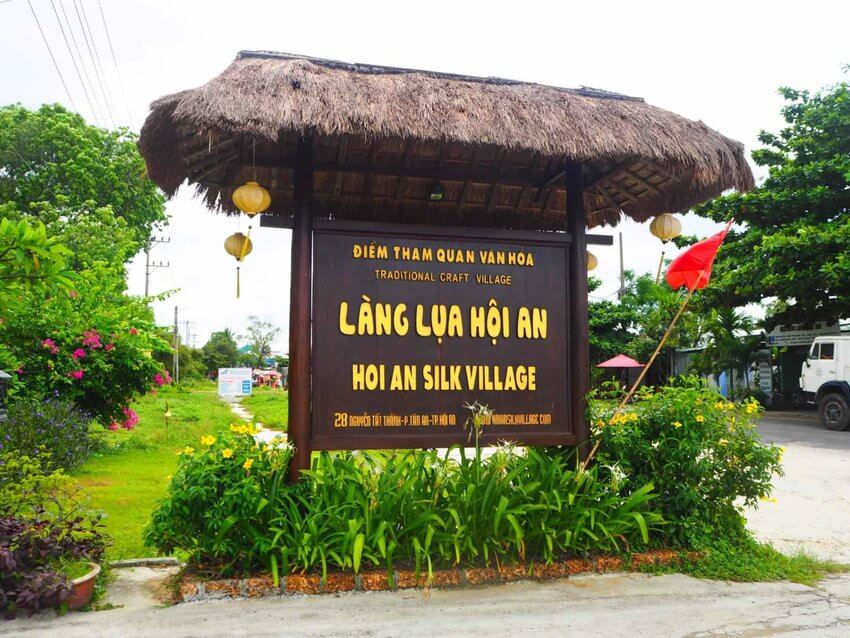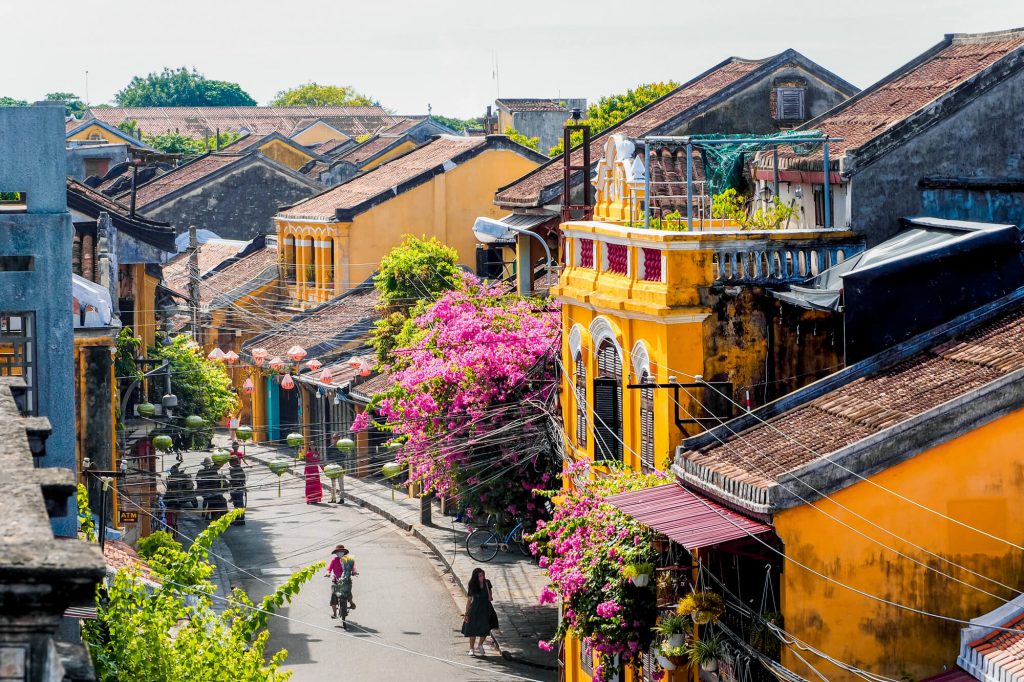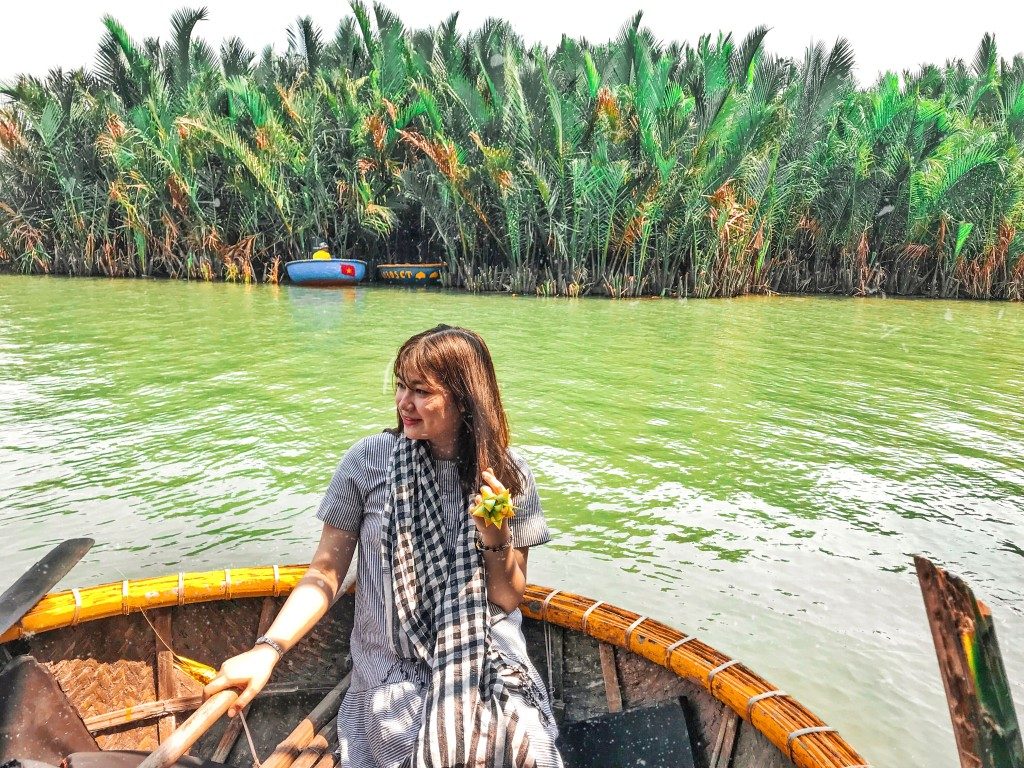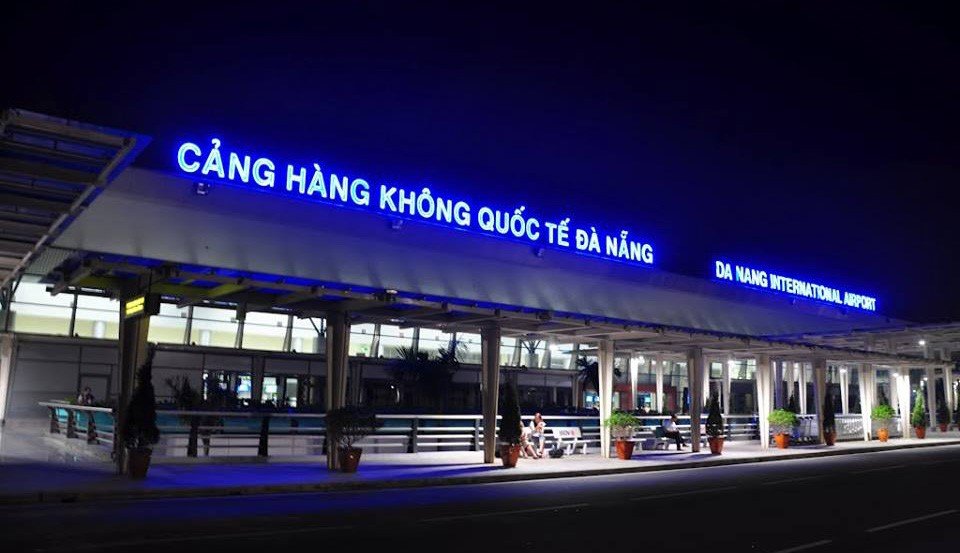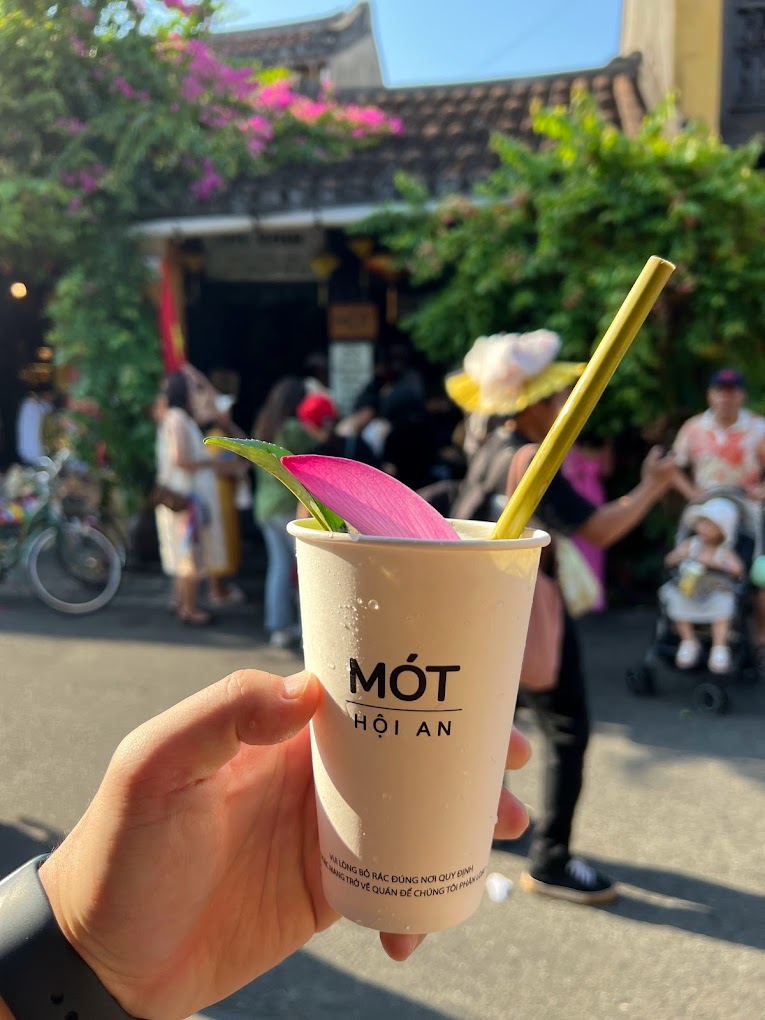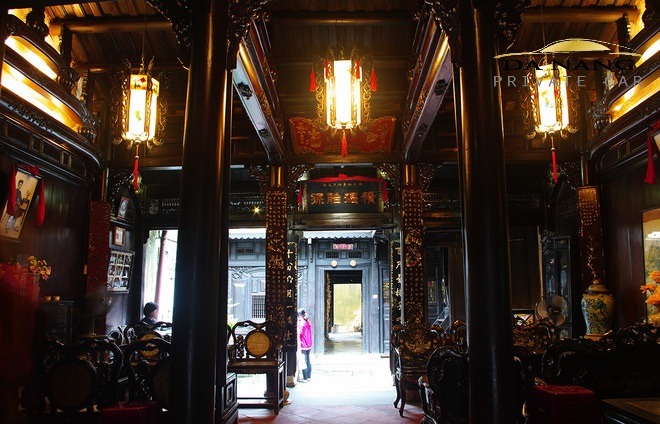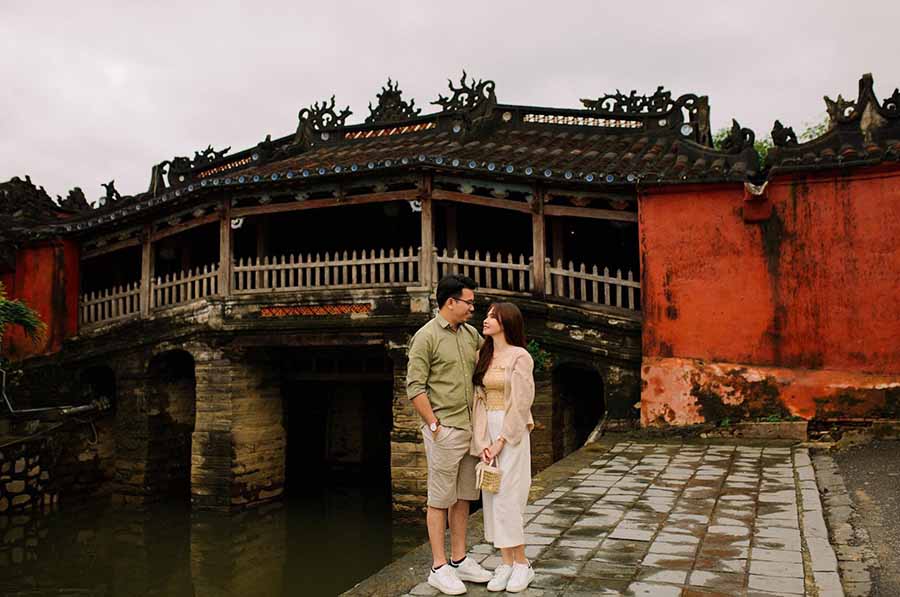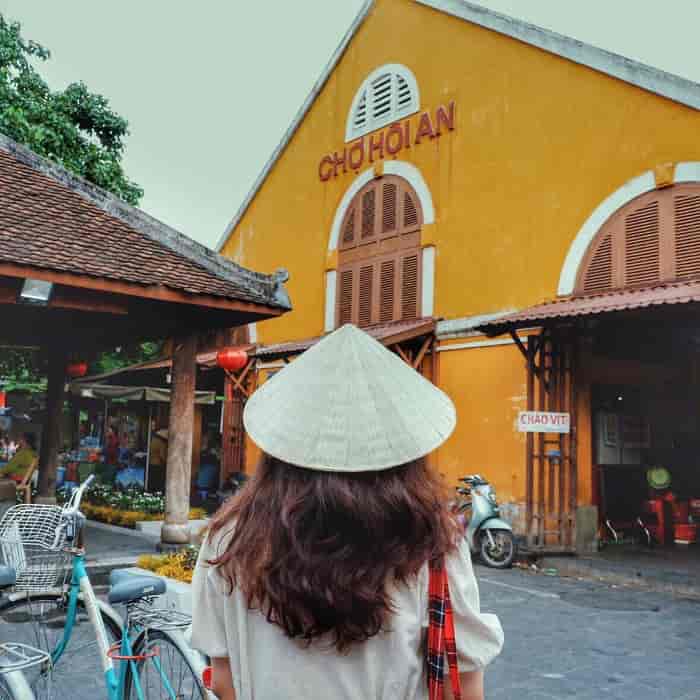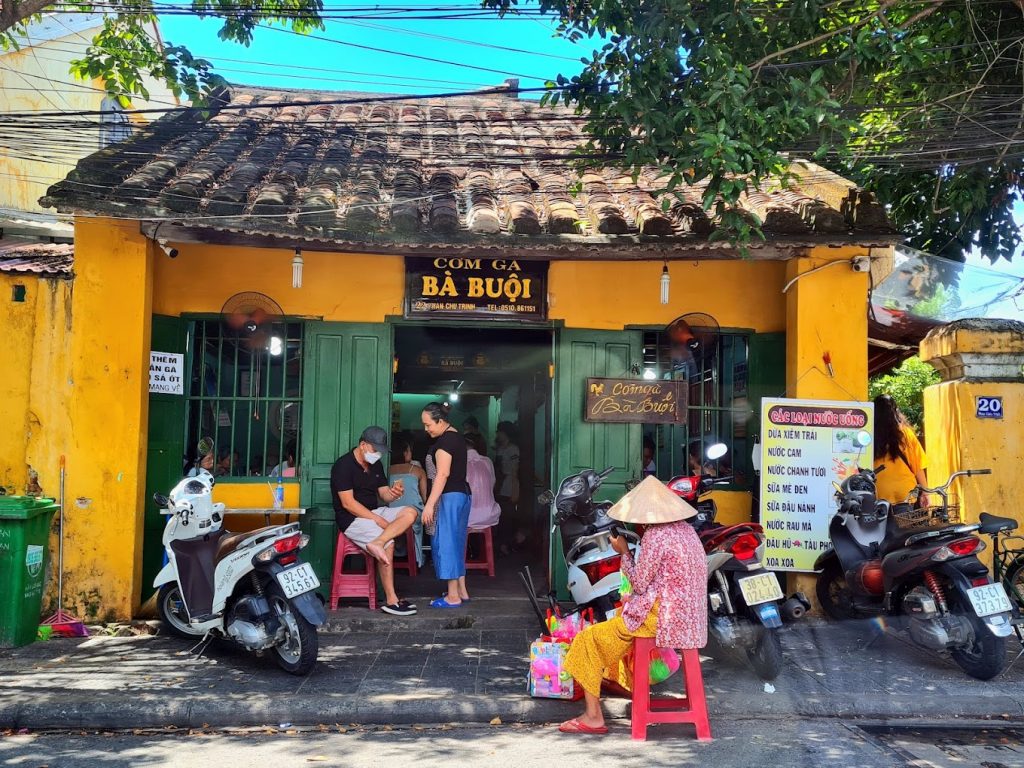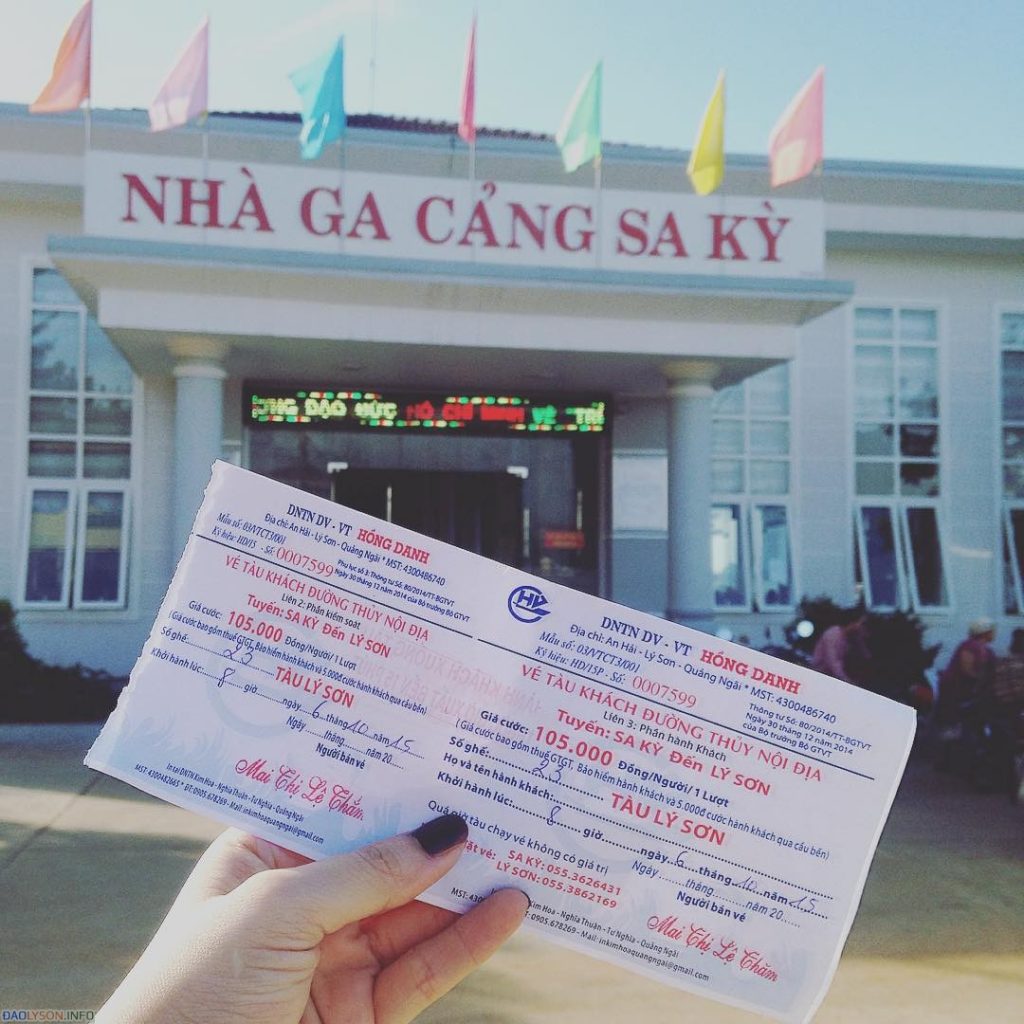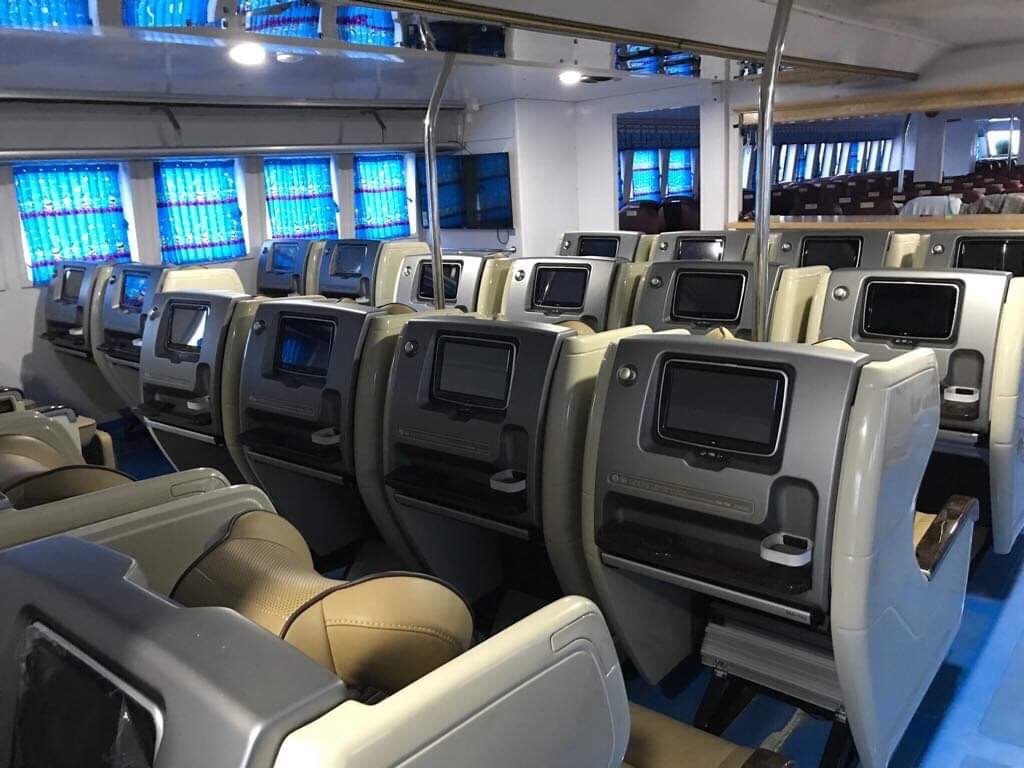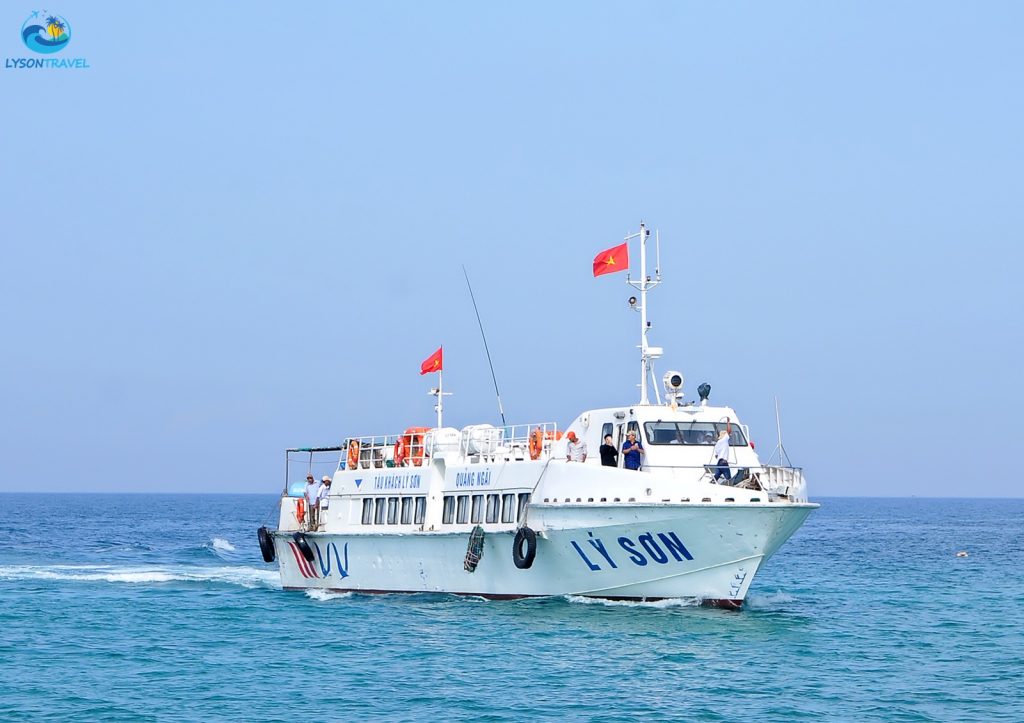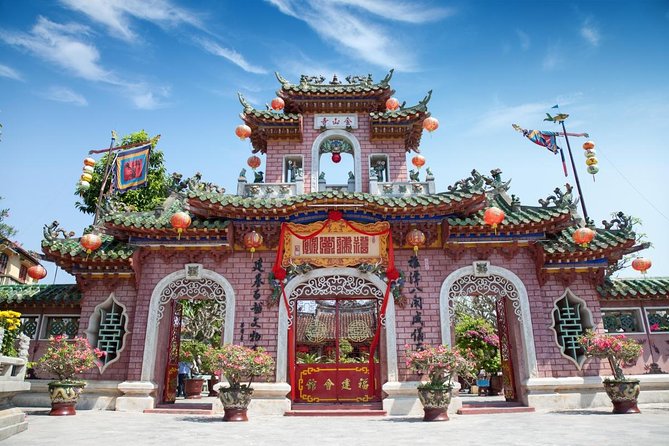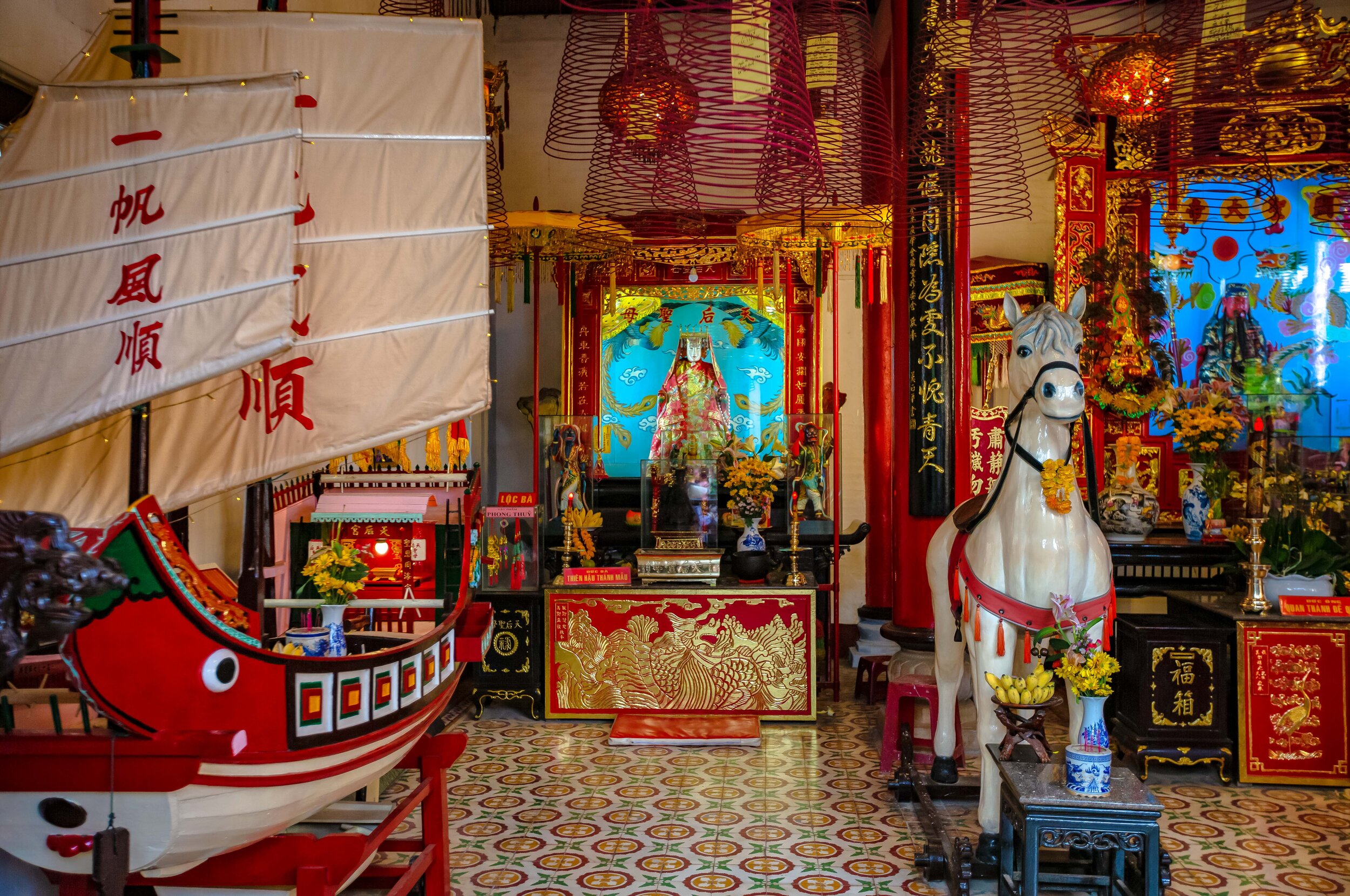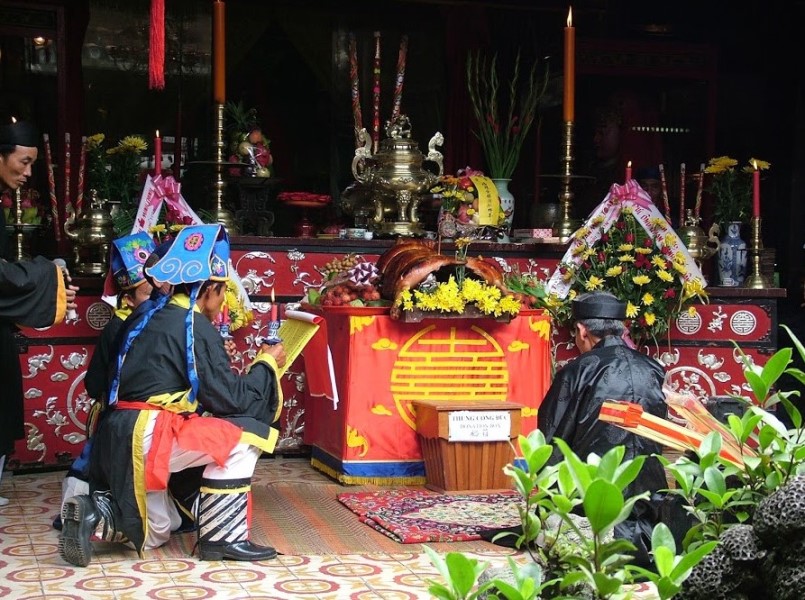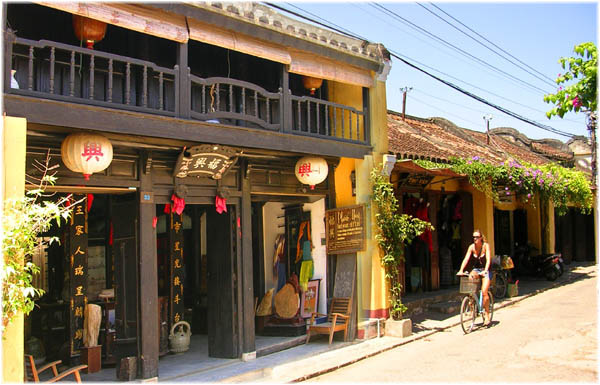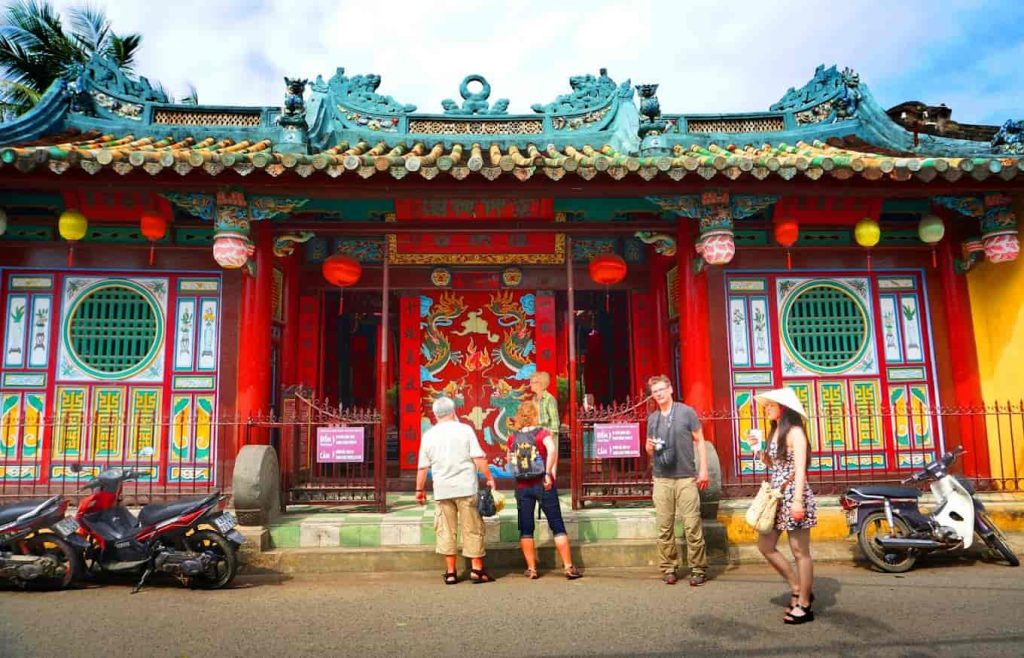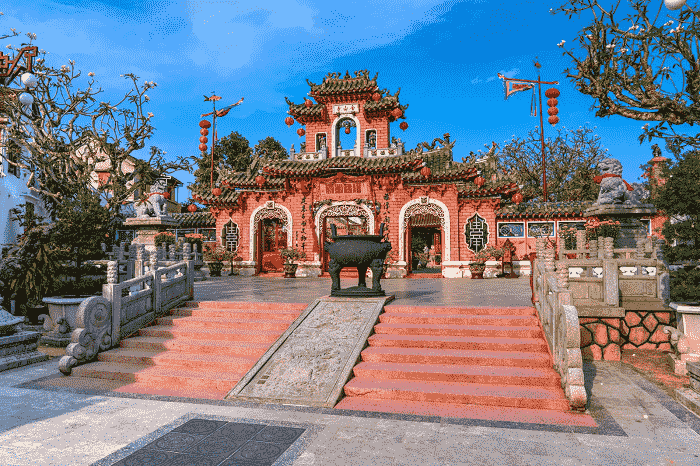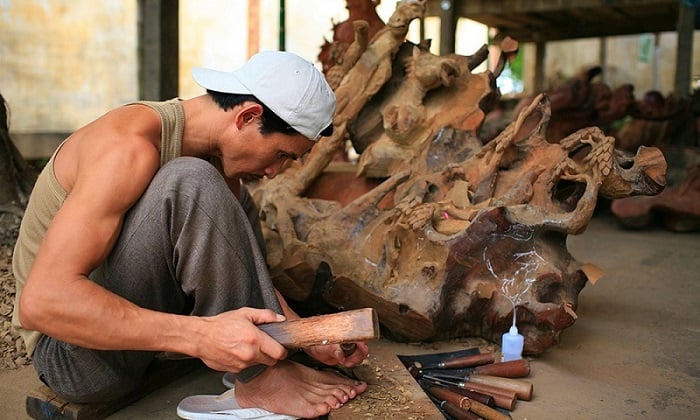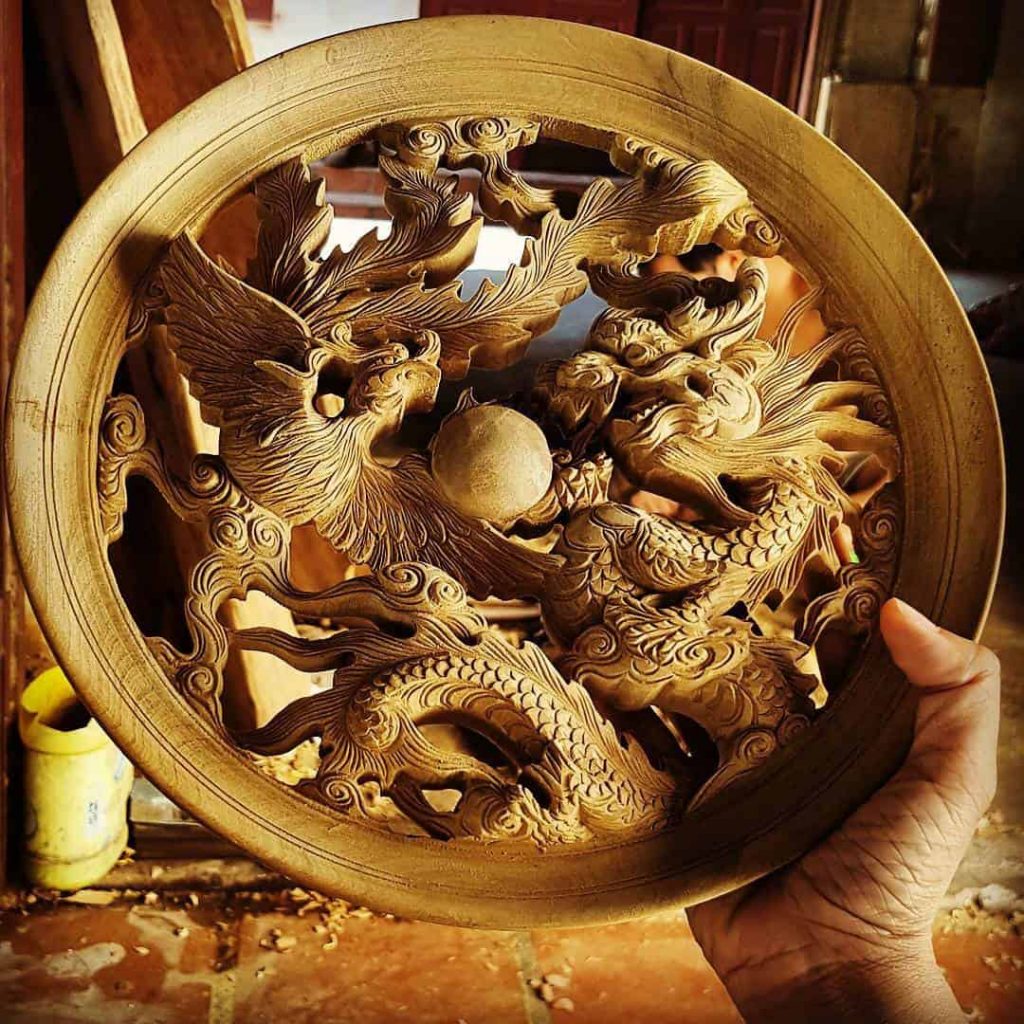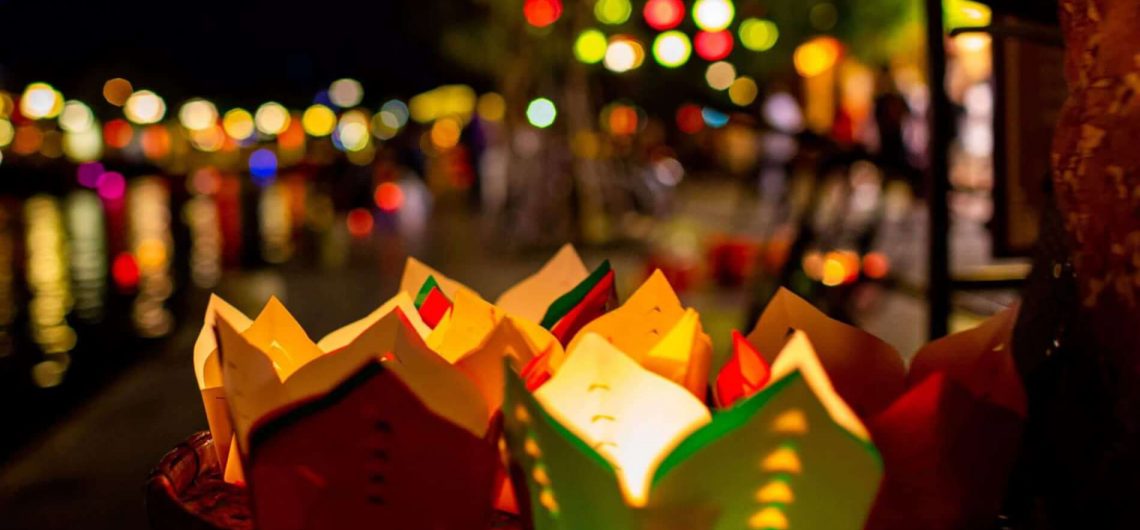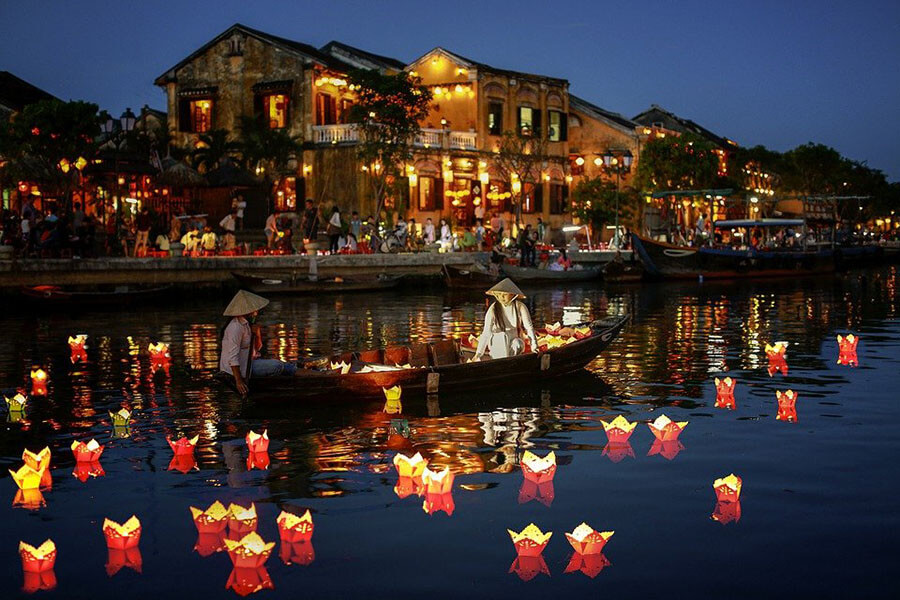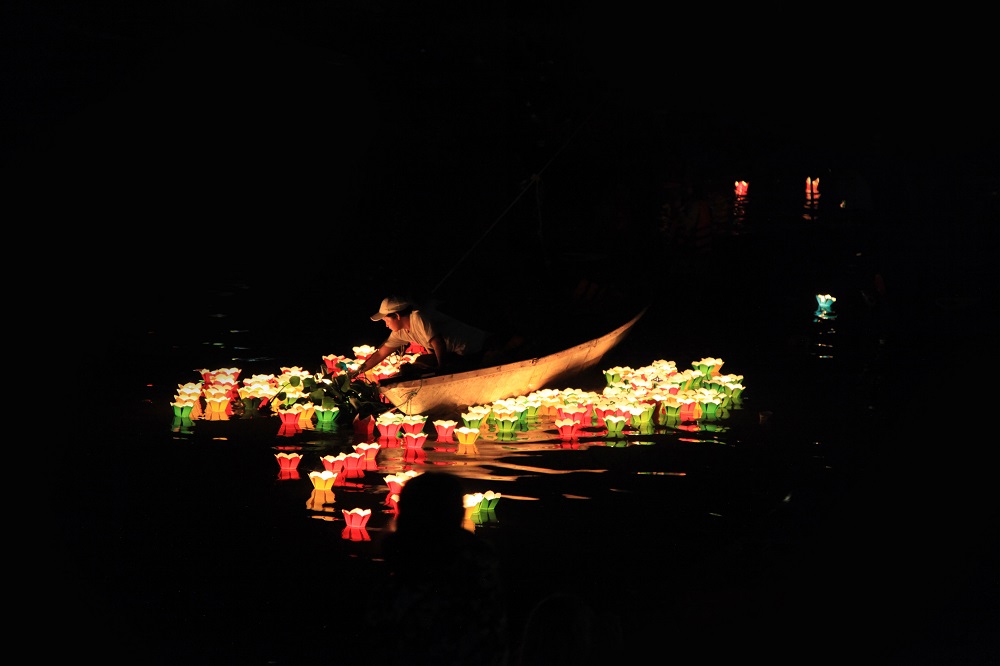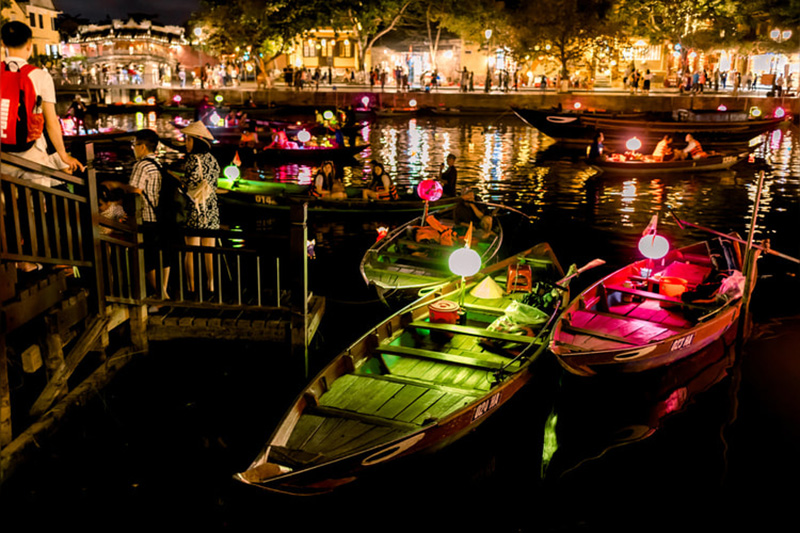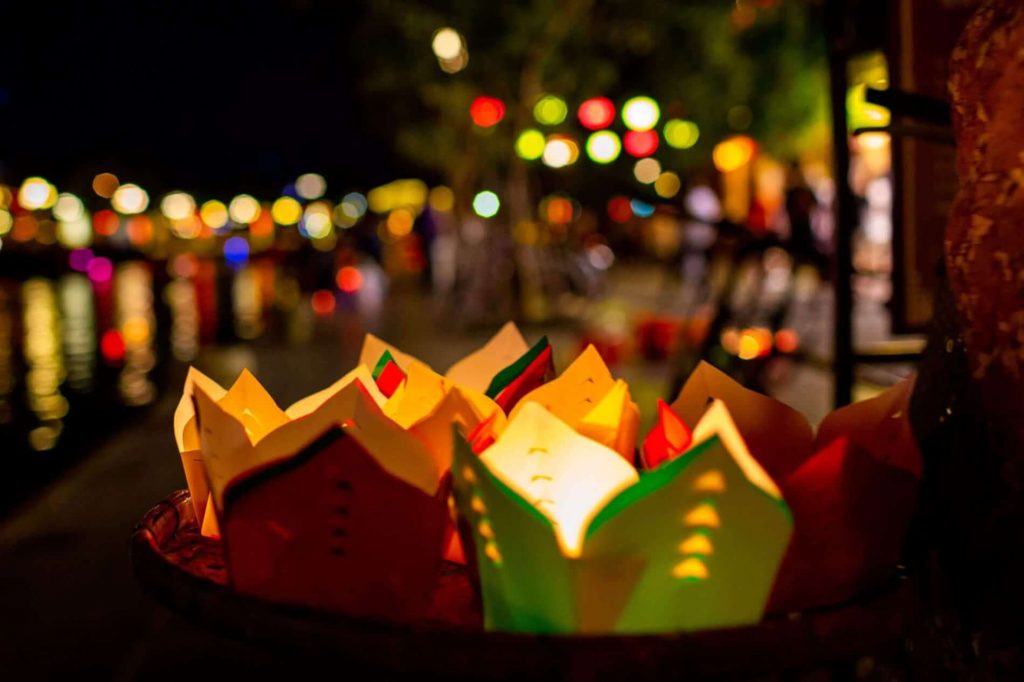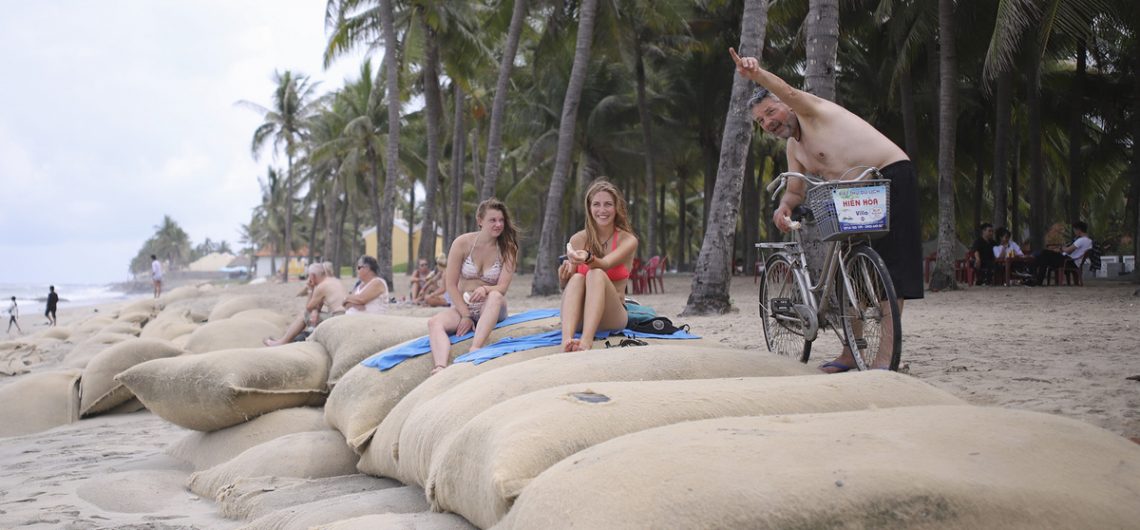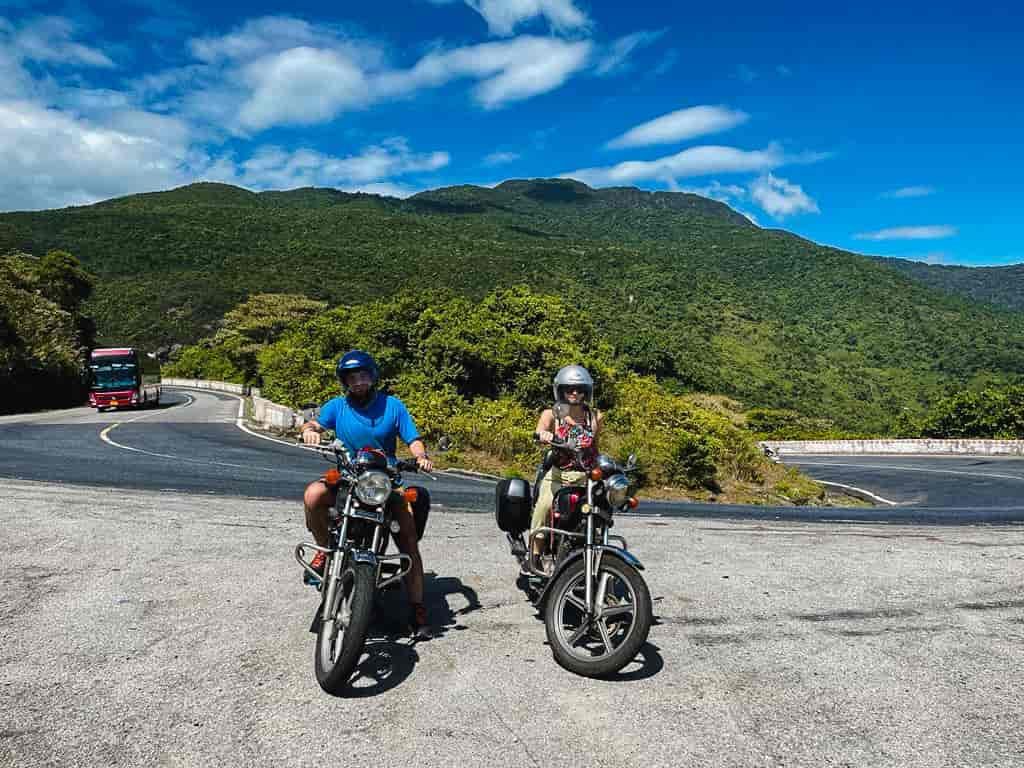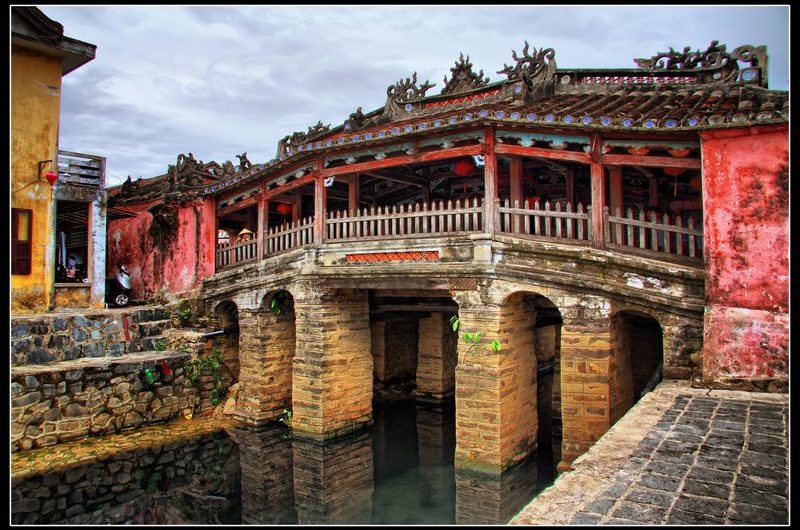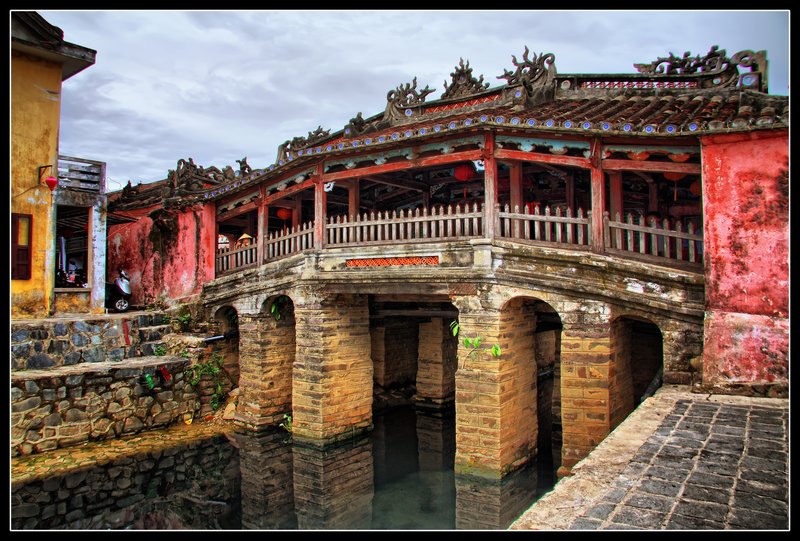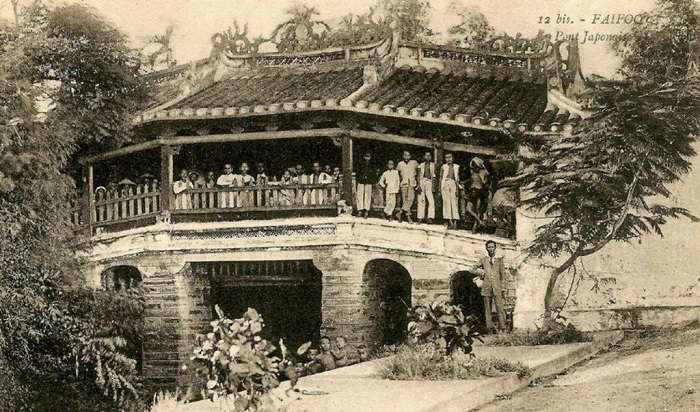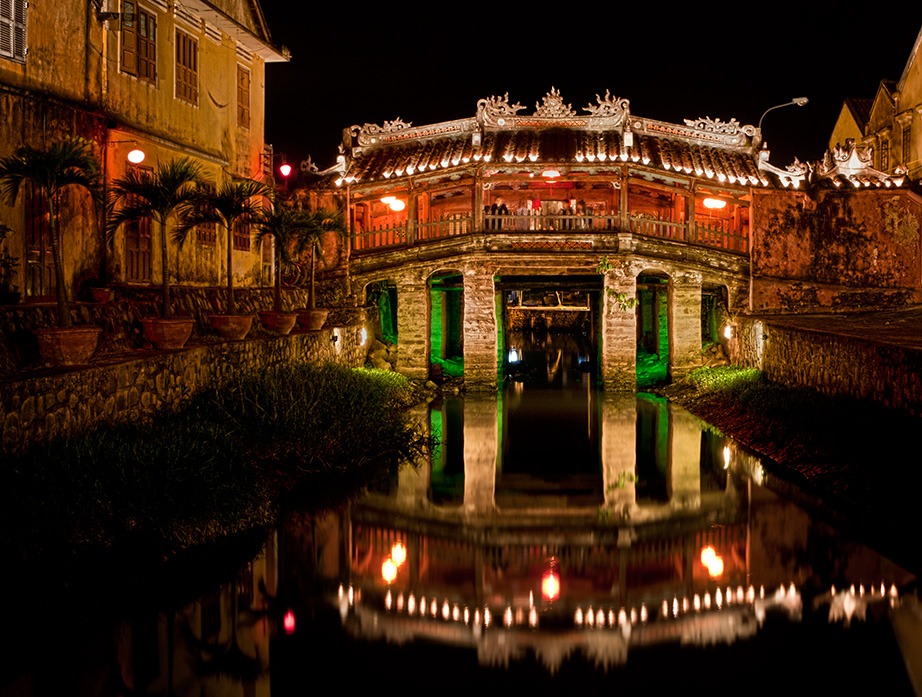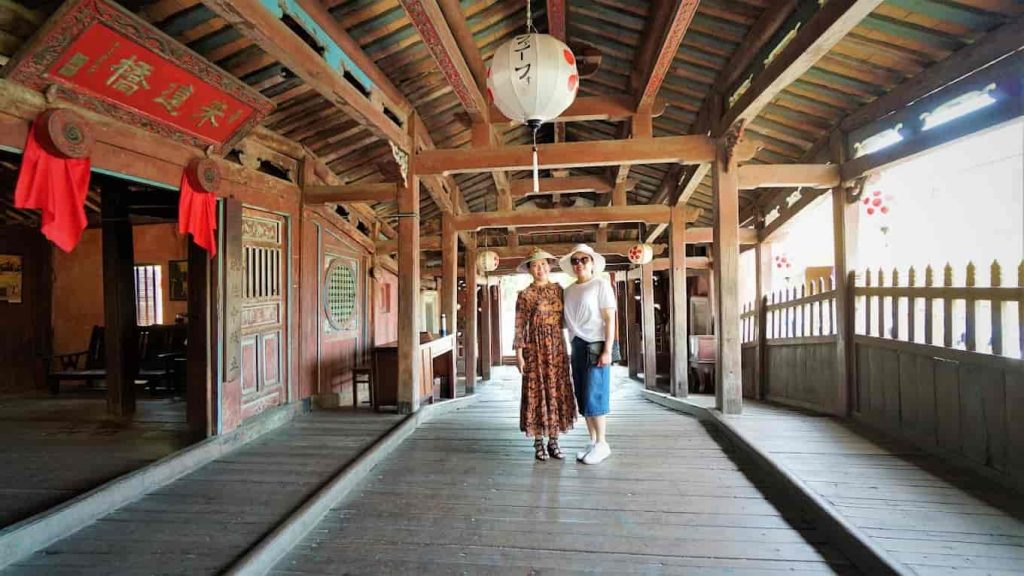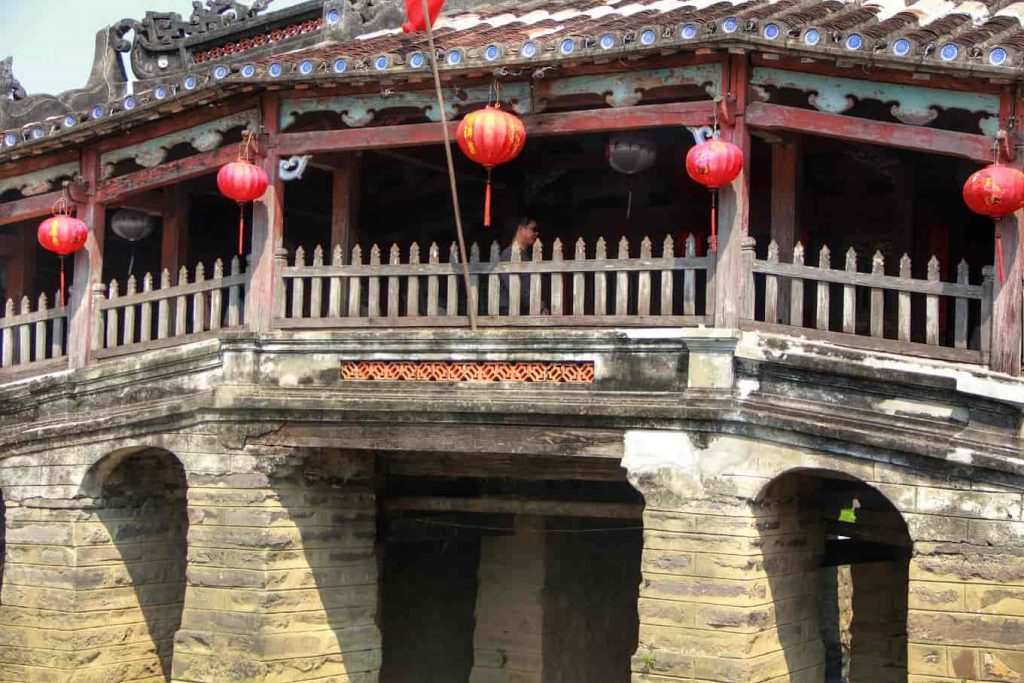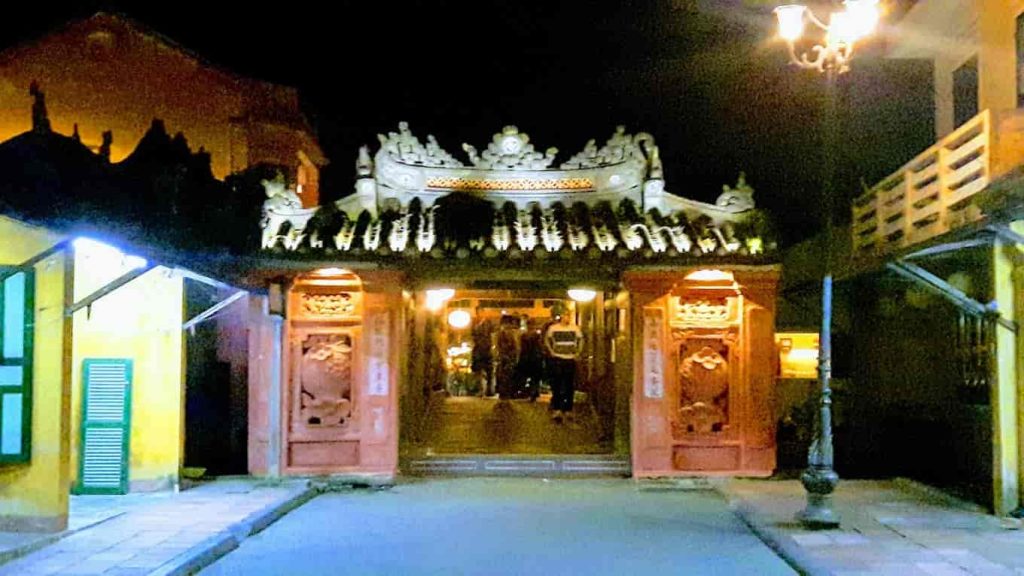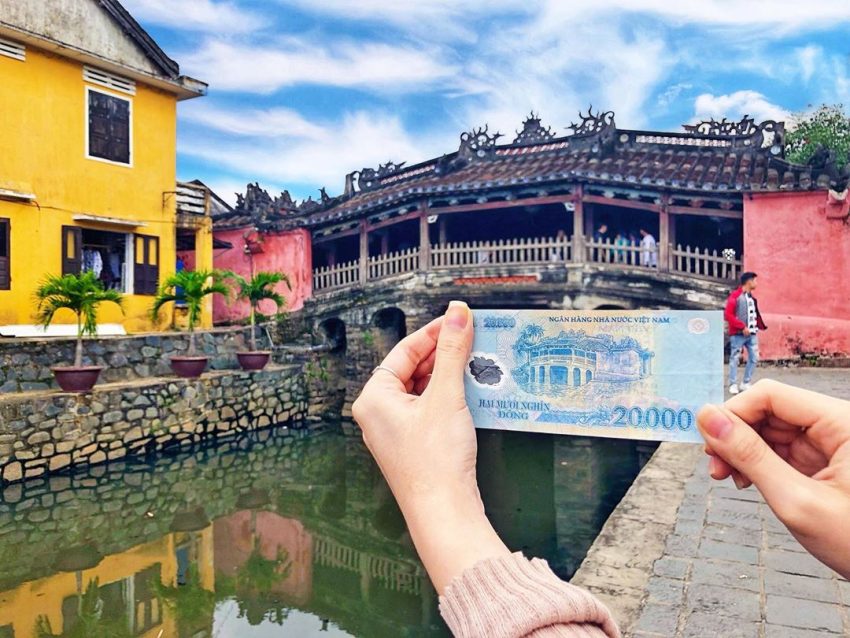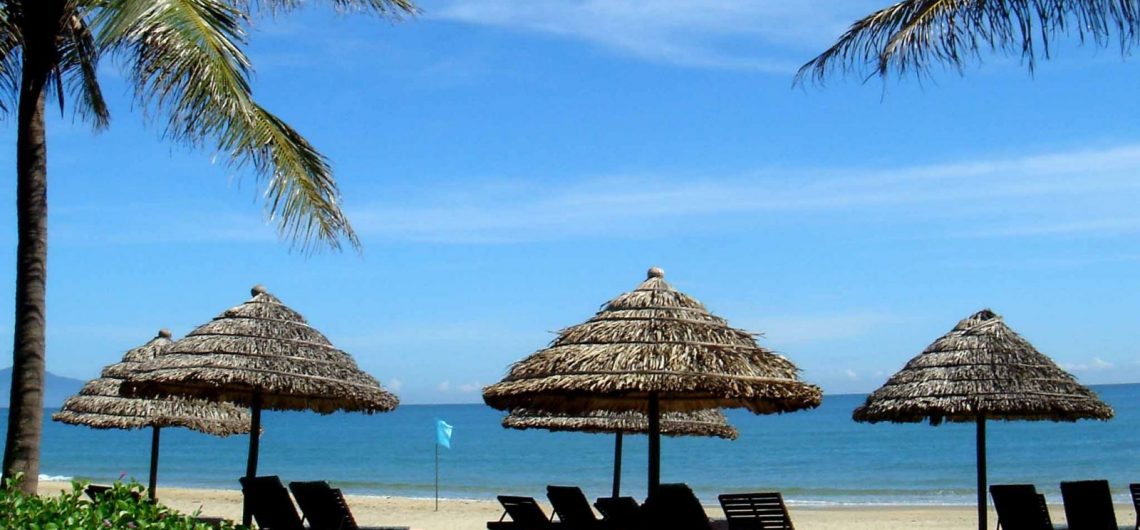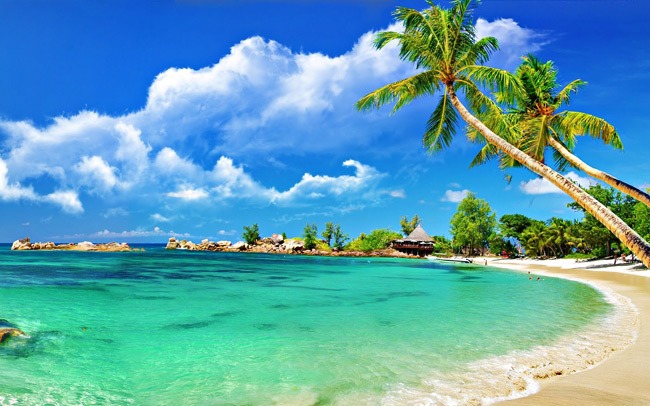Green travel, a journey towards nature to seek relaxation, inner peace, and rejuvenation for both the soul and body, has become a popular trend. If you’re in search of such a destination, Tra Que Vegetable Village in Hoi An is an excellent recommendation offered by Danang Private Car’s. While it’s not a new destination, it continues to exude its timeless charm and allure, appealing to both domestic and international travelers.
History of Tra Que vegetable village in Hoi An.
In the past, Tra Que village, Hoi An (Quang Nam) was inherently attached to farming and fishing because it was located on the Co Co river branch. After that, the villagers realized that the riverside land is alluvial all year round, helping to make the trees lush and rich, they decided to do a side job of growing vegetables.
Taking advantage of irrigation water from the river, especially the amount of seaweed in the lagoon, can be used as fertilizer, helping the soil to be more fertile and more fertile… so that vegetable farming gradually develops. Growing vegetables gradually became the main occupation of Tra Que villagers.

Up to now, Tra Que vegetable village in Hoi An has been over 300 years old. Throughout the village, there are hundreds of households growing vegetables with an area of about 40 hectares, including more than 20 different types of vegetables.
The vegetable village has become the largest vegetable granary providing fresh vegetables all year round for people around the region and neighboring areas in Quang Nam and Da Nang provinces.
In particular, Tra Que is a vegetable village that still maintains the method of growing organic vegetables, mainly watering with clean water and applying green fertilizers, organic fertilizers are utilized from seaweed picked up directly from the lagoon. As a result, the finished vegetable product is clean, fresh, and loved by consumers.
Today, it is not just a traditional vegetable growing village. Tra Que also develops tourism services, which is a destination that attracts both domestic and foreign tourists.
Where is Tra Que Vegetable Village in Hoi An?
Address of Tra Que vegetable village
Tra Que vegetable village is located in Cam Ha commune, Hoi An city, Quang Nam province – Only about 3km from the center of the old town to the northwest.
This place is known for growing a variety of green vegetables on the fertile land between Tra Que lagoon and De Vong river.
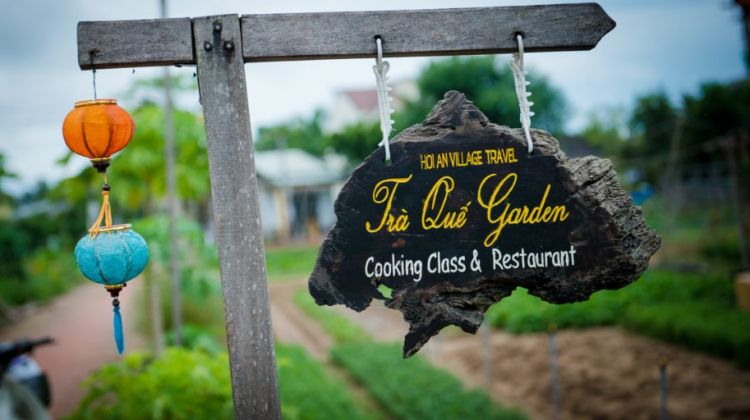
Tra Que vegetable village today has become an ideal eco-tourism destination for those who want to leave the city, find a peaceful and quiet countryside to relax, find peace in their souls and forge peace of mind. exercise, improve health.
To explore Tra Que Vegetable Village in Hoi An using the private car service in Hoi An from DanangPrivateCar.com’s, you can undoubtedly make your trip more comfortable and convenient. Professional drivers and basic English language skills will help you interact easily and provide you with additional information about the places to visit during your journey.
To book a private car trip from Hoi An to Tra Que Vegetable Village, you can contact DanangPrivateCar.com’s through their website or phone number at +84 88 666 0396. Wishing you an exciting journey and a great experience at Tra Que Vegetable Village!
The origin of the name Tra Que vegetable village in Hoi An
Many visitors to Tra Que are curious about the origin of the name of this tourist village. It is known that the origin of this name comes from the story of the Nguyen king.
Accordingly, in the past, the vegetable village was called Nhu Que – which means that it is a place to grow vegetables with a strong and fragrant smell like the scent of cinnamon trees.
In the 18th century, a king of the Nguyen Dynasty, while traveling on the De Vong River, heard the reputation of the village with many strange and aromatic herbs, so the king decided to stop by to enjoy the taste of the dishes here.
In it, there is a vegetable with a spicy taste like cinnamon but fragrant with camellia, the king was extremely impressed and named this place Tra Que land.
Since then, for more than 300 years, Tra Que vegetable village has been associated with the name given by the king. The village specializes in growing aromatic vegetables such as cilantro, herbs, onions, perilla… and many other green vegetables.
The ideal time to go to Tra Que vegetable village in Hoi An
Time
As an eco-tourism address close to nature, activities at the vegetable village are located outdoors. Therefore, visitors should choose a time when the weather is not too hot, and also avoid rainy and cold times to facilitate fun and experience.
The best time is from February to April and from August to December every year. This is the time when the Central region in general and Hoi An – Quang Nam in particular have cool, dry weather, the greenest vegetables of the year. The space at this time is also extremely fresh, cool, and green.

During the day, the most suitable time to visit the vegetable village is in the early morning or after 4 pm. At this time, the weather is cool, pleasant, not hot. This is also the time when farmers go to the fields to plant and take care of vegetables, you can chat and join them.
Ticket price for Tra Que vegetable village in Hoi An
To have a day of sightseeing and experience activities at the green and fresh space of Tra Que vegetable village, you only need to spend about 35,000 VND/person to buy tickets.
Exciting experiences at Tra Que vegetable village in Hoi An
If you are a soul that loves peace and romance, then Tra Que is the only tourist destination for you. Coming to this traditional village, you will feel like returning to your old hometown, feeling the rhythm of life suddenly become light and slow, making us forget all the troubles and fatigue out there.
DanangPrivateCar.Com‘s will suggest you interesting experiences that should not be missed when coming to Tra Que vegetable village .
“Virtual life” forgets the way back
In the middle of a peaceful, poetic, green, one-color country space, it will be really lacking if you don’t save your “so deep” moments here.
For girls, country clothes or vintage dresses are an ideal suggestion for the concept of taking photos in the vegetable village. You will naturally transform into charming, gentle village girls.
This place has countless check-in corners close to nature, filled with the colors of plants, flowers, green vegetable beds … for you to “live virtual” freely.
In particular, if you come here in the early morning, when the “rain sprinkler” system for the vegetable garden is in operation, you will get a series of extremely romantic photos.
Try to be a real farmer
Since becoming an attractive tourist destination, Tra Que Hoi An vegetable village has developed many interesting experiences to serve the needs of visitors. One of them is a tour to transform into a genuine farmer.

Visitors will be able to do the work of a true farmer such as tilling the soil, sowing seeds, planting and watering plants, harvesting green vegetables. Even if you are not skillful, you can rest assured because every step is meticulously guided by local farmers.
In addition, you can also participate in other jobs with indigenous people such as casting nets, pulling nets on the river, riding buffaloes…
Harvest fresh and clean green vegetables to bring home
Going to the vegetable village without harvesting fresh, delicious green vegetables is a waste! In Tra Que, visitors can not only learn and listen to the farmer’s secret to growing and caring for vegetables according to organic methods, but also can harvest fresh vegetables to bring home.
Loads of fresh, delicious vegetables harvested by hand will definitely make your family meal after the trip much more attractive.
Try your hand at the kitchen at Tra Que Hoi An vegetable village
After planting, caring for and watering vegetables, the next step is indispensable for the processing of specialty dishes of Quang Nam and Hoi An from the fresh ingredients just harvested from the vegetable field.
After a long day of wandering, having fun in the fields, visitors will return to the chefs to choose the ingredients. You will directly cook famous local delicacies such as Quang noodles, banh xeo, Cao Lau, hot pot…
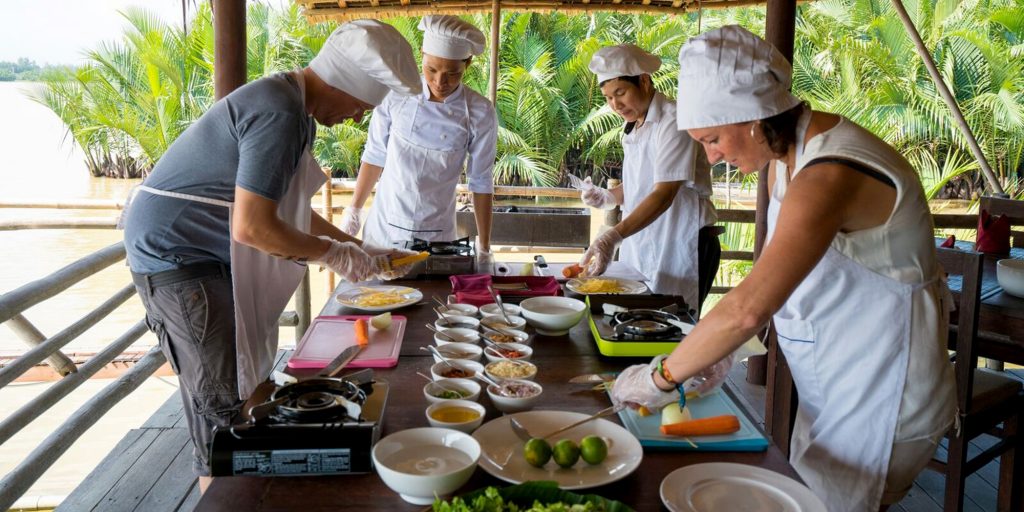
Hot pot dishes with added spices such as cilantro, coriander; or fresh vegetables served with Quang noodles, chicken rice, Cao Lau … will make the taste of the dish become more attractive, attracting diners.
Just being able to directly perform the cooking stages, and being able to fill an empty stomach after participating in experiential activities, this is indeed a great experience.
Participate in Cau Bong festival
If you can arrange a schedule, you can choose to go to Tra Que vegetable village in January. On the 7th day of the first lunar month, in Tra Que, Cau Bong festival will be held.
This is an opportunity for people and tourists to pray together for a year of bountiful crops, lush trees, favorable rain and wind, and a lucky and happy life.
Tra Que Vegetable Village Tour Itinerary
After planning your visit to Hoi An Ancient Town, here is a suggested itinerary for exploring Tra Que Vegetable Village:
Morning: Explore the Scenery and History
8:00 – 9:00: Arrive at Tra Que Vegetable Village Start your visit to Tra Que Vegetable Village early in the morning. This is the ideal time to enjoy the beauty of the lush green vegetable beds under the morning sun and fresh air.
9:00 – 10:30: Visit Historical Sites With an entry fee of 35,000 VND, you can explore the village’s important historical sites:
- Nguyen Dien’s Tomb: The resting place of a renowned official who made significant contributions during the reigns of Emperors Minh Mang, Thieu Tri, and Tu Duc.
- Tra Que Stone Well: Built during the Champa period, this stone well provided fresh water for the local residents and is a testament to the village’s long history.
10:30 – 12:00: Observe Cultivation Processes Take time to watch local farmers as they work on soil preparation, applying seaweed fertilizer, planting vegetables, and watering. This is a great opportunity to understand the unique cultivation methods of Tra Que Vegetable Village.
Lunch: Experience Farming and Cuisine
12:00 – 13:30: Lunch at a Local Restaurant Enjoy lunch at a local restaurant where you can taste dishes made from fresh Tra Que vegetables. Don’t miss the chance to try Tam Huu – a must-try specialty of the region.
13:30 – 15:30: Farming Experience Join the “A Day as a Tra Que Farmer” tour for a unique experience of local farming life. Activities include:
- Carrying fertilizer for the vegetables
- Participating in vegetable care activities such as watering and fertilizing
- Harvesting vegetables
This activity not only provides enjoyment but also helps you appreciate the hard work and passion of the village’s farmers.
Afternoon: Cooking Class and Relaxation
15:30 – 17:00: Cooking Class Participate in a short cooking class where you will learn how to prepare delicious specialties of Quang Nam using fresh ingredients harvested from Tra Que’s vegetable garden.
17:00 – 18:00: Relax and Watch the Sunset Conclude your visit by relaxing among the vegetable beds, enjoying the stunning sunset over the fields, and sipping a refreshing glass of Tra Que basil seed drink.
What to eat when going to Tra Que vegetable village in Hoi An?
Coming to each tourist destination, tourists often pay special attention to the specialties of that locality. Because after a long day of fun and sightseeing, there is nothing more interesting than sitting down with friends and relatives while chatting and enjoying typical delicious food.
Come to Tra Que vegetable village, don’t forget to taste the famous dishes below, otherwise you will regret it!
Three friends dishes
Perhaps many visitors first heard the name of Tam Huu – The dish that made the brand of Tra Que vegetable village. Tam Huu dish has the main ingredients: pork, shrimp rolled with basil, wrapped with onion leaves. This dish is dipped with lemon fish sauce, garlic, sweet and sour chili, unforgettable taste.
Quang Noodles
Coming to Hoi An – Quang Nam, you must definitely enjoy Quang noodles. This is a simple and familiar dish of the people of Quang Nam but always has an irresistible attraction.

Mi Quang is an extremely easy dish to enjoy, suitable for the majority of diners. There are many rich options such as: Chicken noodles, snakehead fish noodles, Quang noodles with shrimp and eggs … served with fresh vegetables picked right in the garden, making the deliciousness of the dish even more.
Pancakes – spring rolls
Banh xeo – spring rolls are a special duo that many tourists love and must enjoy when coming to Tra Que vegetable village in Hoi An , Quang Nam.
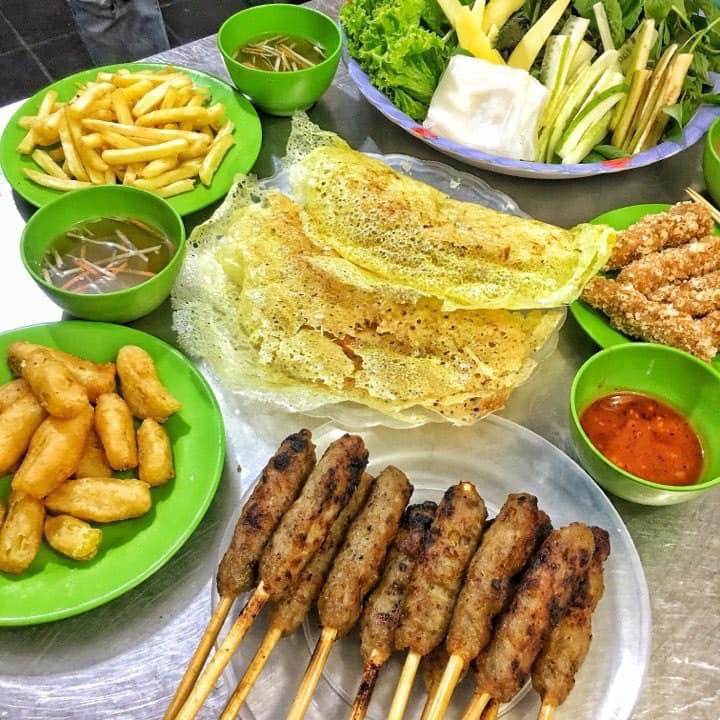
Banh xeo is made from rice flour, the crust is golden and crispy, with the filling of shrimp, meat, bean sprouts, and onions in a very “sweet” blend. When eating, you can cut the cake in two, roll it with rice paper, raw vegetables picked right in the garden, dip it with sweet and sour fish sauce or a typical sauce.
Juice
While walking around Tra Que vegetable garden, you can stop to rest and refresh with a glass of delicious, cool juice right here, which is also very reasonable.
Sesame seeds are small in size, black in color, at first glance look like sesame seeds, when they meet water, they will expand. Juice is a refreshing drink that helps reduce fatigue, cools down, provides vitamins and fiber for the body.
Hoi An Tea
A sweet dish that is both delicious and irresistible and helps to cool down in the summer that visitors to Hoi An cannot help but try is tea.
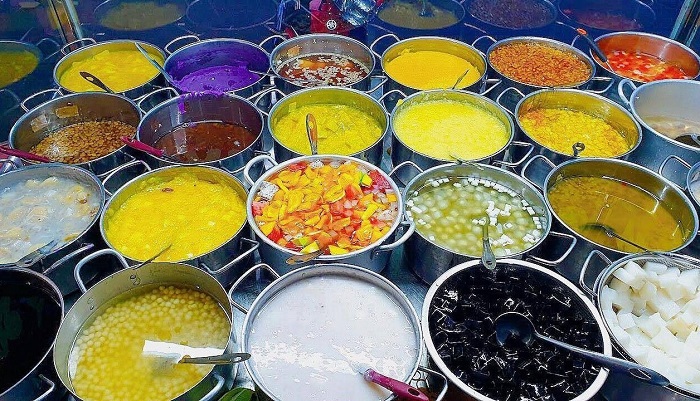
Most of the tea shops here sell mixed tea, including bean and bean tea, filtered powdered tea, water drifting tea, fruit tea, etc. Even though it’s just a familiar and rustic snack, Hoi An tea is always there. It retains its attractiveness thanks to its sweet, cool, and moderate taste.
Suggest a place near Tra Que vegetable village in Hoi An to combine check-in
VinWonders South Hoi An
You can combine to this large, high-class entertainment area in your travel itinerary to Tra Que vegetable village. VinWonders Nam Hoi An is one of the attractive destinations in Quang Nam, suitable for tourists of all ages, especially children.

It consists of 5 subdivisions: Crossing Harbor, Folklore Island, River Safari, Land of Adventure and Water World.
Coming here, you will experience many adventure games such as: Fall of the century, dance in the air… suitable for those who love thrills and adventure.
Cua Dai Beach
Just over 3km from Tra Que vegetable village is Cua Dai beach, a famous beautiful beach of Hoi An with white sand stretching 7km.

After a visit to the vegetable village, you can go to Cua Dai to swim in the cool, clear blue water or take a walk on the beach, where there are green coconut trees.
Hoi An Ancient Town
A place near Tra Que vegetable village in Hoi An that most tourists combine to visit in their journey to Hoi An is the old town.

In 1999, Hoi An ancient town was recognized by UNESCO as a world heritage site. Since then, Hoi An has always been a destination attracting domestic and foreign tourists thanks to the ancient, quiet and peaceful beauty of the ancient town located on the Hoai River.
Thanh Ha Pottery Village
A traditional craft village with hundreds of years of formation and development near Tra Que vegetable village that you can combine to visit is Thanh Ha pottery village .
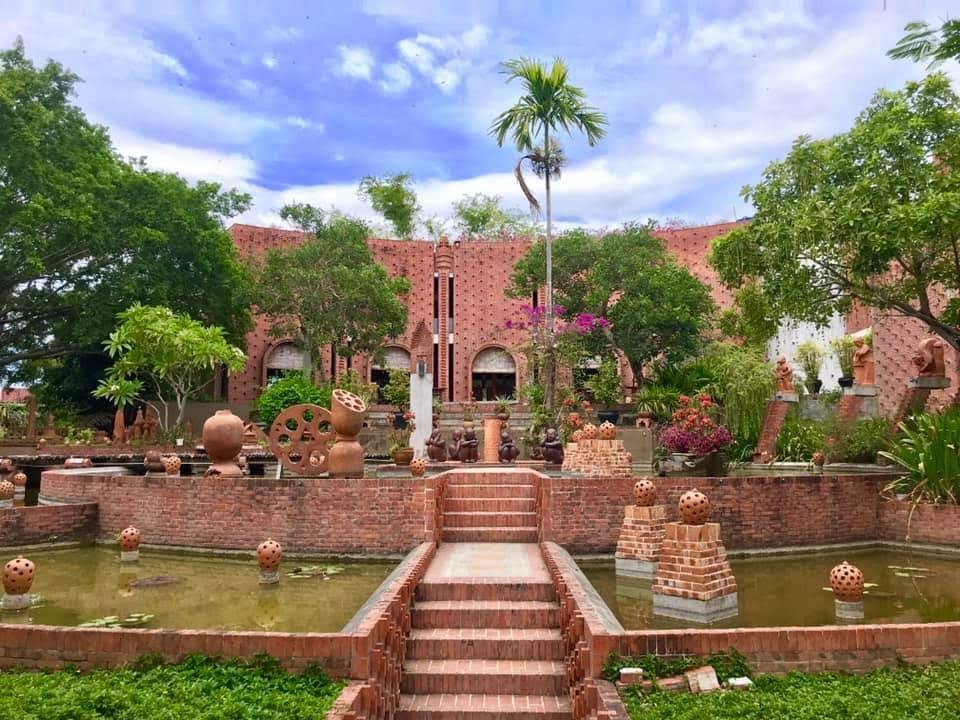
Coming here, visitors will be able to witness firsthand the pottery making process of artisans and can create their own products that they like. In particular, you have the opportunity to admire the largest ceramic park in Vietnam – Terracotta Park at Thanh Ha Pottery Village.
An Bang Beach
Another famous beach of Hoi An, less than 2km from Tra Que vegetable village, extremely convenient for tourists to combine exploring is An Bang beach.

This is a famous pristine, clean, and poetic beach of Hoi An that you will surely be extremely satisfied when you arrive. Not to mention, on the beach, there are also many bars, homestays, “luxury” villas to serve the needs of check-in, relaxation and entertainment of visitors.
What should be noted when discovering Tra Que vegetable village in Hoi An?
There are countless undeniably attractive reasons that DanangPrivateCar.Com‘s has introduced for you to put Tra Que vegetable village on the list of must-go destinations this year. So, what are you waiting for without planning a specific itinerary for your trip?
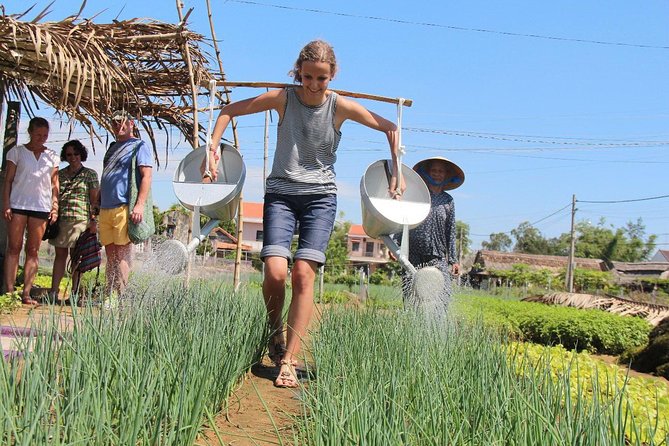
- Most experiences at the vegetable village are outdoor activities, so visitors should choose a cool time, not too hot to start their trip. Remember to bring a hat, a jacket, and apply sunscreen before you go!
- When experiencing being a farmer, remember to follow the instructions of the people, do not arbitrarily water vegetables or harvest vegetables arbitrarily.
- If traveling with young children, manage them, remind them to avoid stepping on flowers and vegetable beds.
- Priority should be given to wearing neat, sweat-absorbing clothes, flat shoes or sports shoes to easily participate in activities with the farmers here.
- Finally, remember to preserve the environment, do not litter in the vegetable garden!
Not only tourism and entertainment, a trip to Tra Que vegetable village in Hoi An is also an opportunity for you to return to nature to discover the beauty, enjoy the cool fresh air, slow down, see accept yourself. Eco-tours, towards nature always have a great “healing” effect for the soul, physical exercise, and good health.

